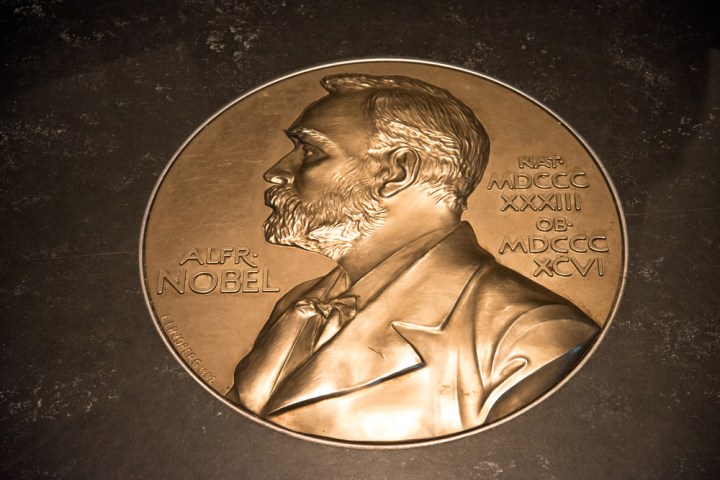
Physics

What they won for: The Nobel Prize in Physics 2015 was awarded jointly to Kajita and McDonald “for the discovery of neutrino oscillations, which shows that neutrinos have mass.” Prior to this discovery, scientists knew that neutrinos (really tiny subatomic particles with spin, but no charge) came in three different flavors, but they didn’t know that an individual neutrino could change from one flavor to another.
Why it’s important: This discovery is huge, because if neutrinos can change flavor, that means they must have some tiny bit of mass — which contradicts the Standard Model of particle physics. This doesn’t necessarily mean the Standard Model is wrong and should be thrown out, though. It’s just incomplete. Kajita had McDonald basically proved that we still don’t know everything about the universe, and that we need to keep exploring.
Chemistry

What they won for: The Nobel Prize in Chemistry 2015 was awarded jointly to Lindahl, Modrich and Sancar “for mechanistic studies of DNA repair.” Basically, these guys discovered that DNA molecules aren’t as stable as we previously thought. They’re actually incredibly unstable, and undergo spontaneous changes and mutations all the time — so much that, in theory, the development of life on Earth should have been impossible. This discovery led the scientists to investigate what keeps DNA from decaying. As it turns out, there are actually different repair mechanisms that constantly help our DNA fix itself itself when something goes wrong.
Why it’s important: The mechanisms described by these Nobel laureates (specifically, base excision repair, DNA mismatch repair, and nucleotide excision repair) have given biologists a fundamental insight into how cells function and repair themselves, which is invaluable. This research will also give us new ways to develop treatments for a wide range of diseases — especially cancer. This discovery is a huge step forward for biology.
Health & Medicine

What they won for: The Nobel Prize in Physiology or Medicine 2015 was divided, one half jointly to Campbell and Ōmura “for their discoveries concerning a novel therapy against infections caused by roundworm parasites” and the other half to Tu “for her discoveries concerning a novel therapy against Malaria.” Campbell and Ōmura developed a new drug called Avermectin, the derivatives of which have radically lowered the incidence of River Blindness and Lymphatic Filariasis — as well as a number of other parasitic diseases. Tu discovered Artemisinin, a drug that has significantly reduced the mortality rates for people suffering from Malaria.
Why it’s important: This pretty much goes without saying, but the drugs that Campbell, Ōmura, and Tu have developed are powerful new tools that humanity can use to combat diseases that affect hundreds of millions of people annually. These drugs will lead to improved health and reduced suffering on an absolutely massive scale.
Editors' Recommendations
- 2020 Nobel Prize for physics goes to pioneering black hole scientists
- Nobel Prize awarded to physicists who changed our understanding of the cosmos




